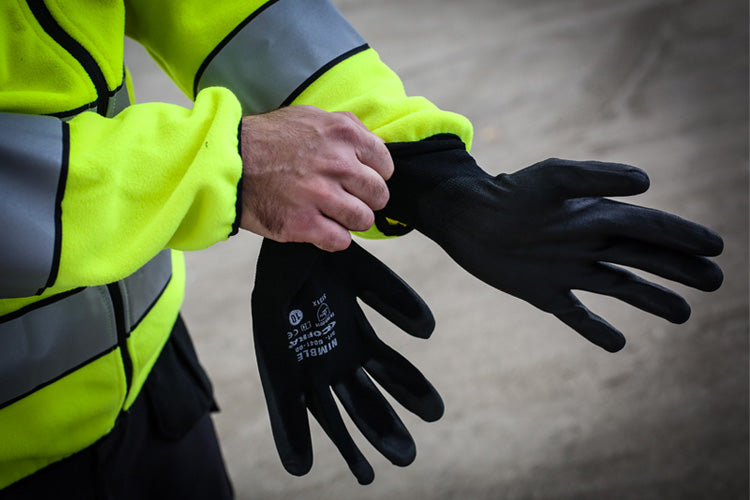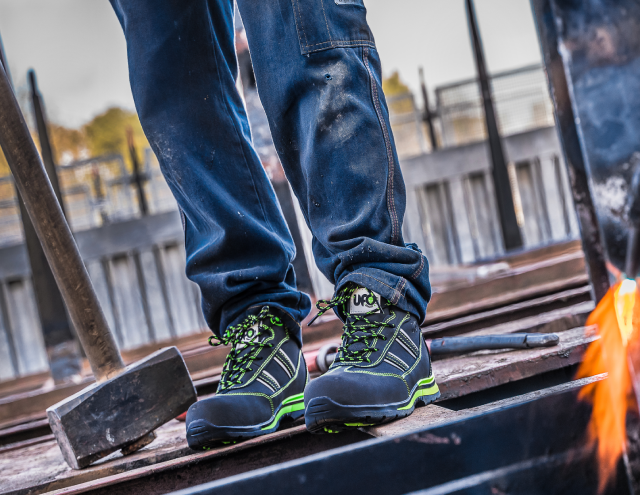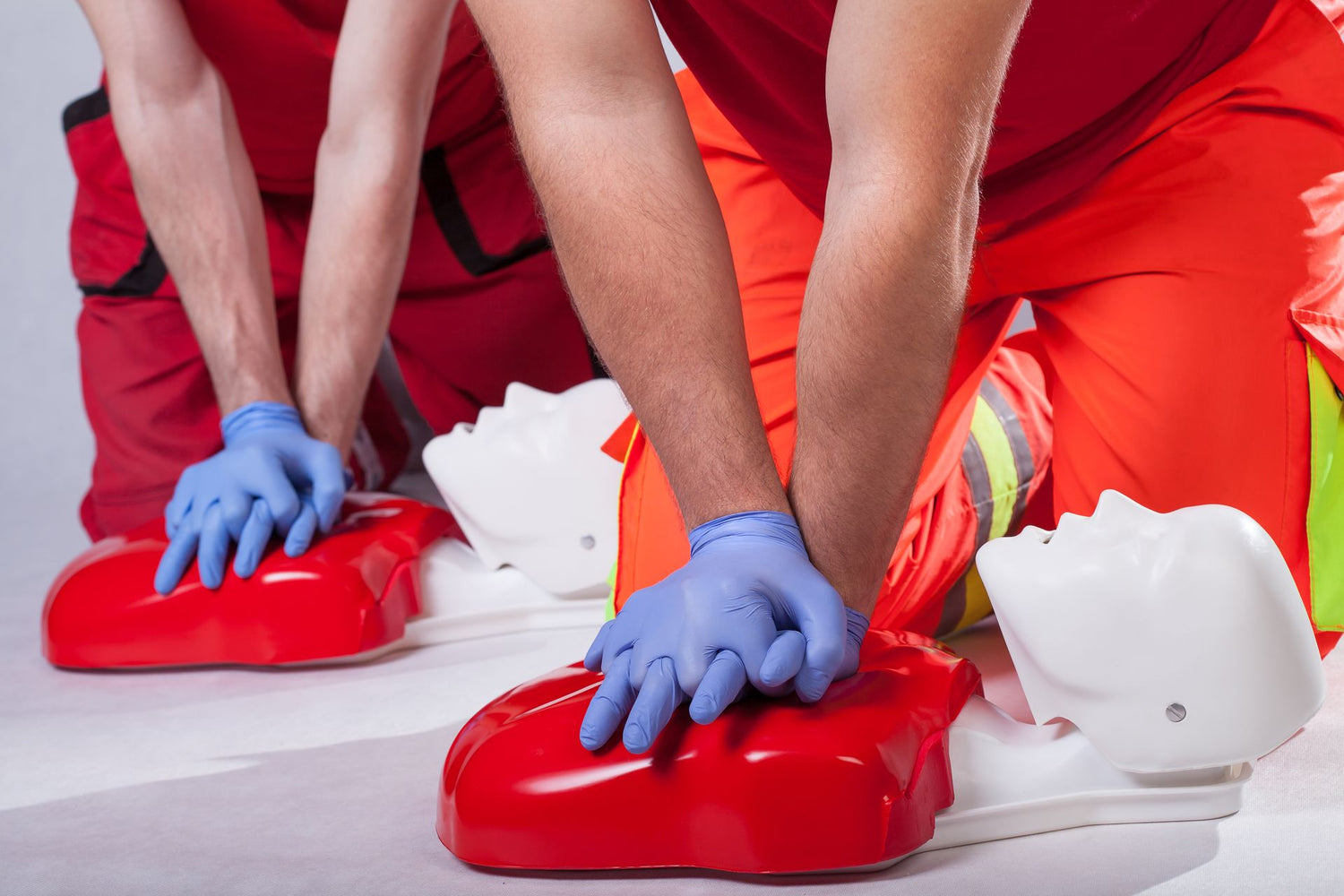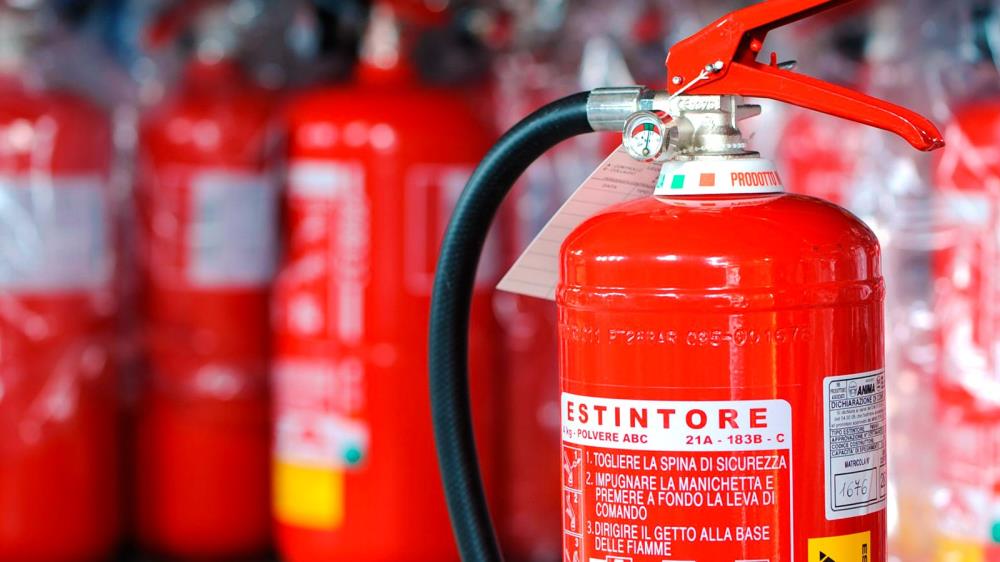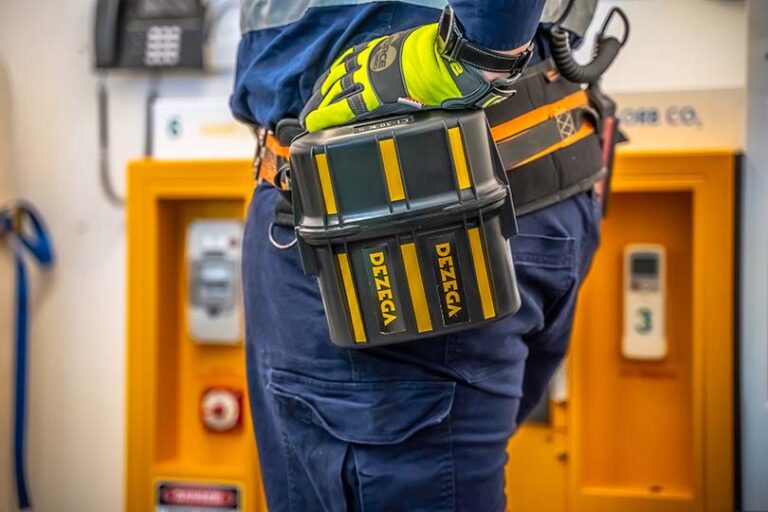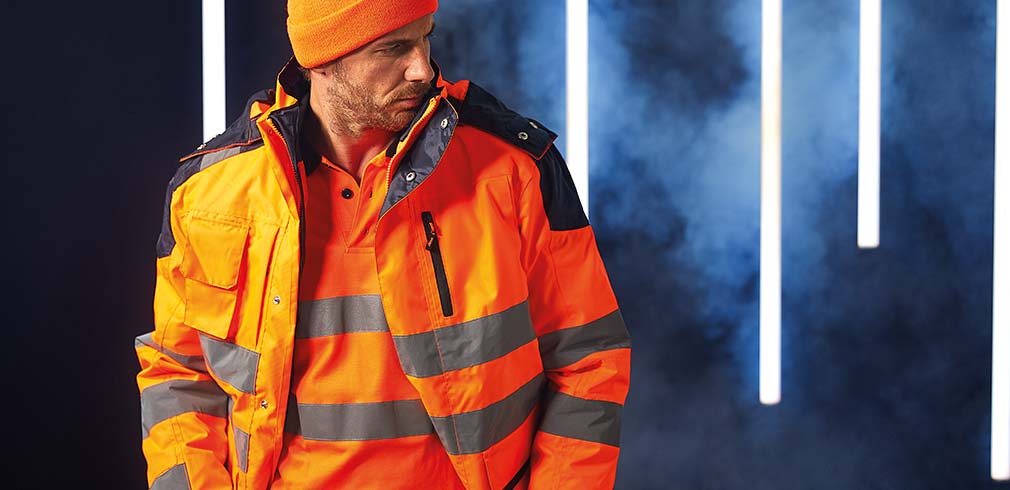At work, hand injuries are very common as hands are used continuously, it is also the first source of contamination by viruses and chemical elements. Properly chosen gloves are the solution to avoid cuts with sharp objects, or direct contact with chemicals. With this guide we will help you find the type of glove and the size you need . Trust an expert!
Step 1: How do I know what size gloves I need?
Get your glove size right. It is very important to choose a glove of the right size for your hand because only in this way the protection will be complete. Also, choosing the right size increases comfort and dexterity.
To know the correct size for your gloves you need two things: your hand and a tape measure.
You should only wrap the tape measure around the widest point of your hand (usually the knuckles). These are the standard measures that you can find:
The size of a glove is always expressed in inches. If your hand is between two sizes, always choose the smaller one – protective gloves should always feel tight and get bigger over time.
Step 2: Should I choose gloves with powder?
In addition to the size of a glove, you should know whether or not your industry allows powdered gloves . Many gloves, such as disposable latex, vinyl, or nitrile gloves (more on that later), have cornstarch powder added that helps make the gloves easier to put on and take off. Moisture and sweat are absorbed faster thanks to this powder. This makes these gloves very comfortable to wear, but they are not always recommended: in the food industry or in a clinical setting, for example, mixing cornstarch with products should be avoided.
Step 3: How do I choose the right protective gloves?
You have already chosen your size. Now you need to decide which safety gloves are best suited for your job. The international symbols shown below will help you in your search:
1. CE certification
CE stands for European Conformity and is awarded to products that comply with European regulations . These rules apply, inter alia, to electrical appliances, toys and personal protective equipment. To know the veracity of this mark, it must be taken into account that it must always be legible, visible and indelible.
2. European standard for protective gloves ⇒ Standard EN 420
This European standard describes some basic requirements for protective gloves. This refers, for example, to the fact that:
- Work gloves must not contain substances that can cause allergies.
- Gloves should be designed according to European hand size.
- The pH values should always be as neutral as possible.
3. Do you work with machines? ⇒ Standard EN 388
This symbol indicates work gloves that protect against mechanical risks : cutting with a blade, tearing, sanding and even drilling. The pictogram below symbolizes the protection against mechanical risks that a glove can give you, you will see a representation of the performance levels in 4 figures. These are expressed from 0 (lowest protection) to 4 or 5 (highest protection). If you see an X instead of a number, that means this performance metric doesn't apply to the glove.
Some special variants are shown below: Gloves for handling grease and non-slip gloves .
4. Do you work with chemicals? ⇒ Standard EN 374 -1
If you are in contact with chemicals or microorganisms, you should only use gloves with the pictograms you can see below. This pictogram indicates the chemical against which the glove offers protection.
5. Do you work with microorganisms? ⇒ Standard EN 374
Microorganisms can refer to bacteria, fungi and even viruses. For gloves that protect against this type of risk, you can choose from the following materials: Latex, vinyl or trilite.
|
· Good biohazard protection, ideal for laboratories and hospitals. · Very comfortable. · Very elastic . |
|
|
Ideal for the cleaning, hospitality or packaging industries. · Resistant to acids, chemicals, oils and greases. · Cheaper than latex or nitrile. |
|
|
· Mix of latex, nitrile and neoprene. · Comfortable and durable . |
6. Do you work in a cold environment? ⇒ Standard EN 511
It may be necessary to work in a cold environment for a long time. In this case it is preferable to use protective gloves with the symbol shown below. Under this symbol you will often find 3 digits. These indicate the 3 performance levels at which the gloves have been tested. If instead of a number you find an X, it means that this performance is not applicable to the gloves in question. Here is our cold resistant work gloves .
7. Do you work in a hot environment? ⇒ Standard EN 407
This symbol indicates that the gloves protect against heat. Under this symbol there are, again, the numbers that indicate the degree of protection of the gloves based on their levels of efficiency. Discover our heat resistant polyamide or latex gloves here.
Step 4: How do I choose the right cleaning gloves?
When working with very delicate products, such as glass, jewelry or fine electronics, you should choose these types:
|
cotton |
For precise handling and optimum comfort. Can be used as an inner glove. no fluff |
|
Polyamide |
Better tear and abrasion resistance. Strength and comfort of knitted foam. |
|
50 % polyamide + 50% polyester |
High comfort : flexibility and good dexterity. For handling small and delicate products. They leave no lint. |


